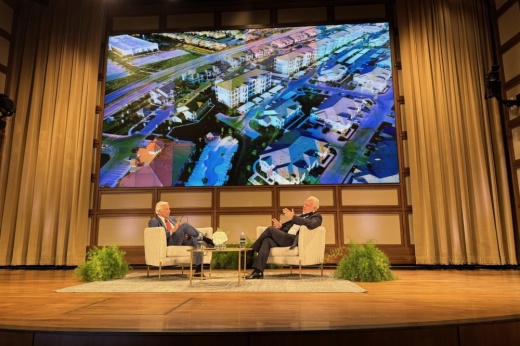What happened?
Executive Managing Director Robert Young revealed the retail market’s occupancy rate during the 2024 Weitzman Annual Forecast in January. Young also detailed inventory and occupancy rates across five shopping center categories, including malls and mixed-use developments.
The report’s data is gathered by surveying more than 1,400 shopping centers across the metroplex. Weitzman officials published a retail market report online that reviews 2023 performance and projections for 2024.
Breaking down the categories
Community centers
- 74.1 million square feet of inventory
- 488 properties
- 96.2% occupied
This category was also the most active in new space construction, accounting for nearly a quarter of new retail space delivered in 2023, Young said.
“This trend will continue in the new year with new stores from leading grocers like Kroger, Tom Thumb and H-E-B,” he said.
Neighborhood centers
- 40.4 million square feet of inventory
- 677 properties
- 94.4% occupied
Neighborhood centers were weakest in the market 10 years ago with vacancy rates reaching up to 16%, Young said.
“But today, this category has pivoted, focusing on patios and open dining experiences and drive-thrus,” he said.
Malls
- 21 million square feet of inventory
- 18 properties
- 91.4% occupied
“Malls unfortunately, at least nationally in some situations, have been the poster child for retail struggles, but here in DFW, years of demolition and redevelopment of weaker malls had removed more than 15 million square feet of that inventory,” Young said.
The remaining inventory shows strong performance as malls evolve to focus on experience and community, according to the report. Malls still post higher vacancy rates because of large-format spaces left behind by Sears and Macy’s, Young said.
Mixed-use
- 11.3 million square feet of inventory
- 62 properties
- 96% occupied
“This category is clearly helped by the strength of the multifamily market here in our area, which reports high occupancy,” Young said.
Power centers
- 44 million square feet of inventory
- 150 properties
- 95.7% occupied
“This improvement still occurred in the face of the failure in 2023 of Bed Bath & Beyond and Tuesday Morning,” he said. “These two bankruptcies alone created 600,000 square feet of new vacant inventory in DFW.”
Also of note
In 2023, about 1.8 million square feet of existing retail space was absorbed by new tenants after closures. Large vacancies left behind were backfilled by quality retailers and fitness concepts, Young said.
“If you’ve got a well-located box in today’s market, you won’t have it for long,” he said.
In case you missed it
In 2024, Weitzman officials expect the retail market to remain stable and end the year at 95.8% leased. More than 2 million square feet of retail space is forecast to be absorbed. Weitzman is also expecting nearly 2 million square feet of new construction to be delivered this year.
Most new construction will come from grocery store chains, such as H-E-B, Kroger Marketplace and Tom Thumb. At least 14 new grocery stores will open in 2024 or will be under construction.





